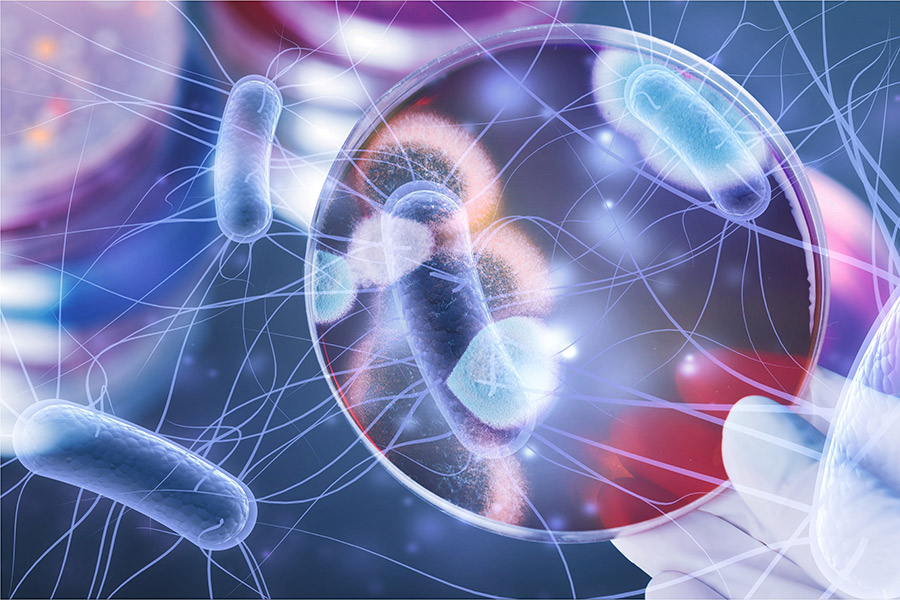
Microbiology: Discovering antibacterial agents
What can we do about the antimicrobial resistance crisis? What does it take to develop a new medicine? Can we fight bacteria with everyday substances…

The following was adapted from an EPFL News article.
I’ve got the power: meet a simple device that can create a powerful sterilizing solution from just air, water, and electricity.
Imagine sterilizing kitchen surfaces and hospital instruments, washing fruits and vegetables, sanitizing hands, or rinsing mouths – all achievable with a single eco-friendly solution: ‘plasma-activated water’ (PAW). Rita Agus, a PhD student at the Swiss Plasma Center, is deeply engaged in research into PAW, which holds promise for solving microbial problems without resorting to traditional sterilization methods that involve heat or harsh chemicals. Recently, she published a paper in the renowned Chemical Engineering Journal,[1] introducing a portable PAW reactor for academic research. This high-tech tool could not only transform water, but also our everyday hygiene practices.
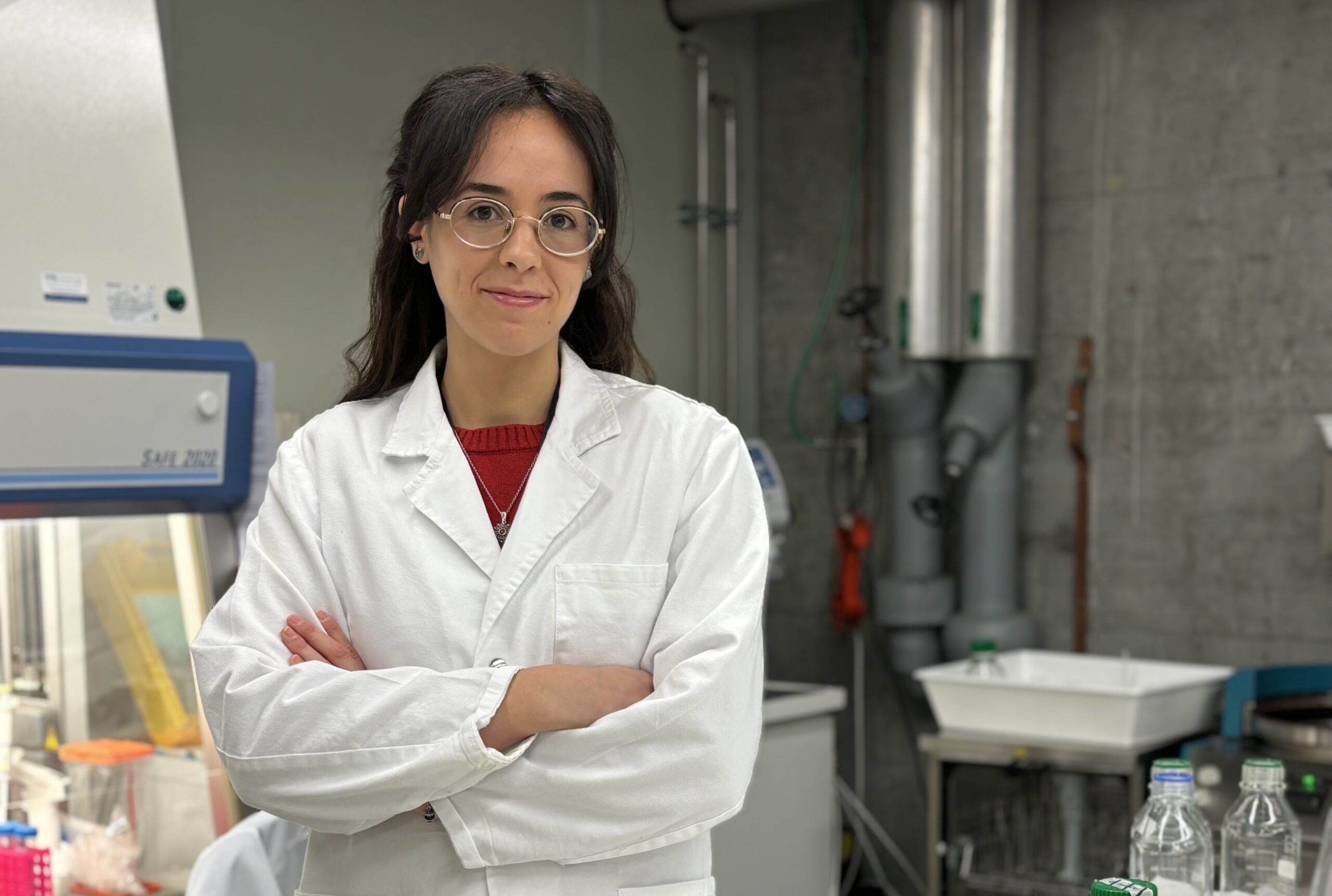
Only a few elements form the core of this portable reactor: a supporting structure, two electrodes, a dielectric in between, and a glass container. The compact reactor can easily slip into a backpack, ready for use anywhere, in any laboratory setting. For the magic to happen, all you need is some water and an electrical socket. Plug in the reactor, wait ten minutes, and ordinary water becomes a powerful disinfectant that’s particularly effective against E. coli, a very common microbe residing in our gut. It’s so simple, we could envision it on every kitchen counter: “plasma-activated water could be used for surface and floor disinfection, cleaning and sanitizing utensils, and even disinfecting laundry,” Rita Agus explains.
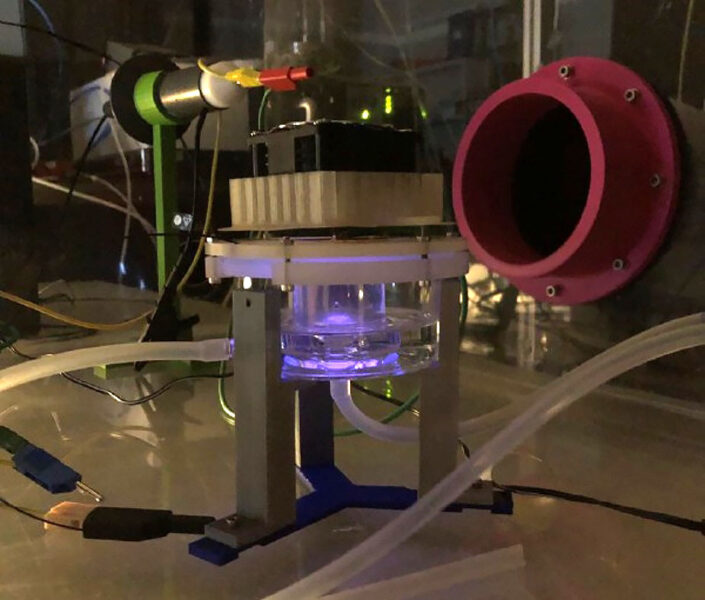
Working under the supervision of Ivo Furno, adjunct professor at the Swiss Plasma Center, Rita Agus and her colleagues dedicated one year of effort, with assistance from various technicians, to manufacture an innovative portable PAW reactor. But what precisely is plasma-activated water and how does it work?
Plasma, the fourth state of matter, is an ionized gas. It can be found in nature, for example, in stars and lightning, and is also created in a range of man-made devices, from plasma balls and neon lights to the tokamak chambers of prototype nuclear fusion reactors.
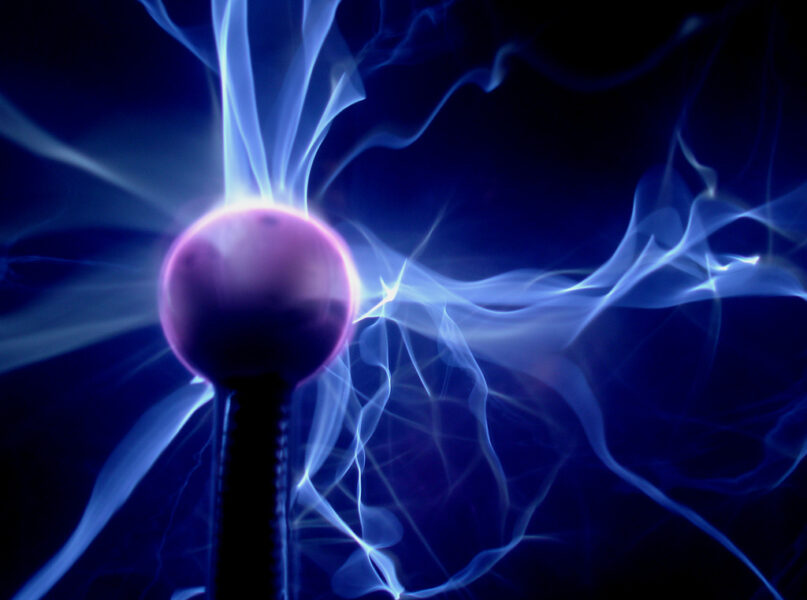
PAW is generated by exposing water to low-temperature plasma, where the operating gas remains at room temperature. The low-temperature plasma used in this study is produced by the ionization of air past an electrical discharge, which produces reactive oxygen and nitrogen species that diffuse into the water to create PAW.[2,3] These reactive species kill microbes, and additionally, nitric acid and nitrous acid are produced, which decrease the pH of the water (make it more acidic) and help to kill microbes. This process imbues the water with powerful antimicrobial properties, making it an effective tool for sterilization and disinfection. The reactive species produced decay over time, reducing their concentration and, therefore, the antimicrobial effect.[4,5]
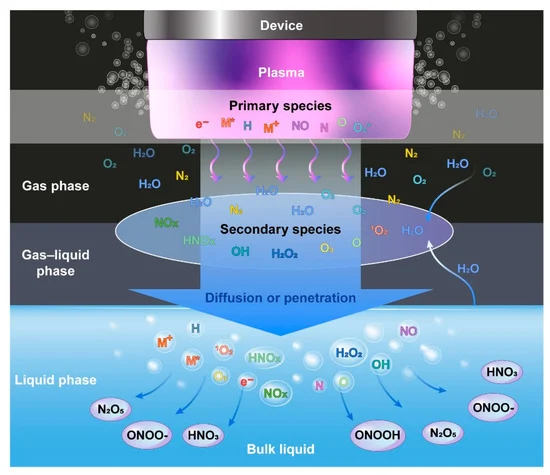
PAW’s appeal lies in its simplicity and versatility. PAW is simply produced by the interaction between an electrical discharge in air and water; it does not require the storage, handling, or disposal of harmful chemicals like ethylene oxide or formaldehyde, which are typically required for chemical sterilization, and thus offers a more eco-friendly alternative. Plus, PAW is cost-effective, needing only basic equipment, water, and electricity. Compared with chemical methods that use chlorine and formaldehyde, PAW wins on both cost and safety and eliminates the need for special gear to handle dangerous chemicals. Another common sterilization method is the use of autoclaves, machines that use pressurized steam to sterilize equipment. However, unlike autoclaves, PAW can efficiently sterilize heat-sensitive materials and food. The energy use may also be lower: studies comparing the power use of plasma-based technologies and standard methods, such as autoclaves and UV, are ongoing.
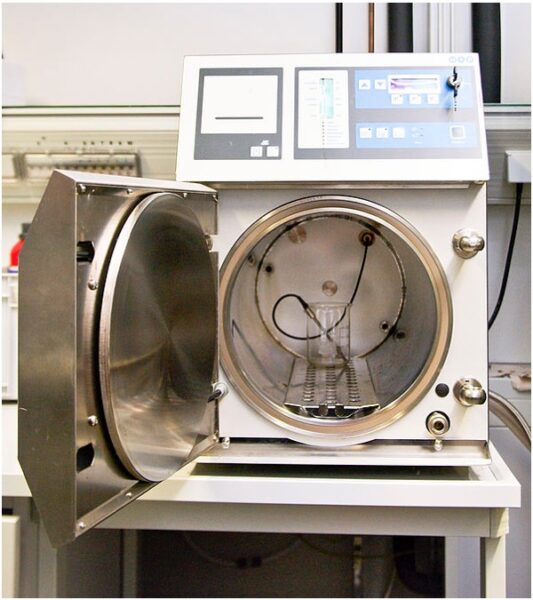
Thanks to its innovative potential, PAW has received significant attention from researchers over the last decade. Although much progress has been made, there are still several challenges standing in the way of the widespread adoption and commercialization of PAW-based technologies. One of these is ‘plasma selectivity’, which refers to the ability to target bacteria and microorganisms while preserving eukaryotic cells and surrounding environments. Establishing plasma selectivity is crucial for the safe and effective use of PAW in healthcare, food processing, and sanitation; and would unlock tremendous opportunities for this technology. Therefore, research into the underlying mechanisms of plasma selectivity and identifying optimal operating conditions is critical to advance PAW-based solutions.
The research carried out by Rita Agus and her colleagues is a step in this direction. Their portable reactor enables the production of different compositions of plasma-activated water by adjusting certain parameters, such as whether or not to recirculate the water, or the duration of water exposure to plasma. For example, when the water is recirculated past the plasma, the total amount of reactive nitrogen species in the PAW increases to up to 25%. These variables affect the effectiveness of the antimicrobial properties of PAW. For example, we know that prolonged exposure enhances their potency, and have demonstrated that water recirculation also significantly increases the antibacterial effect.
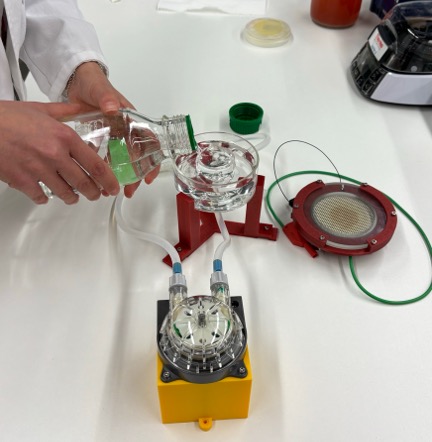
Besides its hygiene benefits, PAW has also emerged as a potential tool to fight harmful microbes. Some researchers argue that bacterial resistance to PAW is unlikely due to its action on multiple targets. Moreover, experimental evidence supports the efficacy of PAW against multi-drug-resistant bacteria. However, further research is needed to confirm whether PAW can prevent the development of bacterial resistance. Additionally, PAW could serve as an alternative or complementary approach to antibiotics, for example, in the topical treatment of wounds infected by drug-resistant bacteria. Further investigation into the mechanism of bacteria inactivation is necessary to assess the potential of safe plasma-based technologies to reduce resistance development.
While challenges remain, particularly in understanding plasma selectivity and optimizing operating conditions, PAW’s potential to combat microbial resistance and enhance hygiene practices is very exciting.
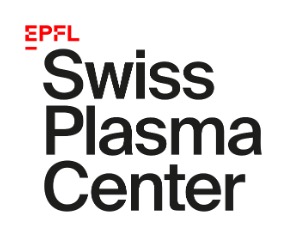
The Swiss Plasma Centre’s activities constitute Switzerland’s contribution to the worldwide fusion effort and are fully embedded in the European fusion effort coordinated by the EUROfusion consortium.
[1] Agus R et al. (2024) Implementing water recirculation in a novel portable plasma-activated water reactor enhances antimicrobial effect against Escherichia coli. Chemical Engineering Journal 486: 149915. doi: 10.1016/j.cej.2024.149915
[2] Wong KS et al. (2023) Plasma-activated water: physicochemical properties, generation techniques, and applications. Processes 11. doi: 10.3390/pr11072213
[3] Zhou R et al. (2020) Plasma-activated water: generation, origin of reactive species and biological applications. Journal of Physics D: Applied Physics 53. doi: 10.1088/1361-6463/ab81cf
[4] Agus R et al. (2024) Plasma-activated water retains antimicrobial properties against Escherichia coli after 72 h of storage. Plasma Physics and Controlled Fusion 67. doi: 10.1088/1361-6587/ad9950
[5] Tsoukou E, Bourke P, Boehm D (2020) Temperature stability and effectiveness of plasma-activated liquids over an 18 months period. Water 12. doi: 10.3390/w12113021

What can we do about the antimicrobial resistance crisis? What does it take to develop a new medicine? Can we fight bacteria with everyday substances…
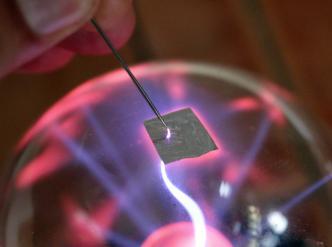
Plasma is the fourth state of matter, after solid, liquid and gas – but what is it like and what can it do? Plasma globes allow us to answer these…
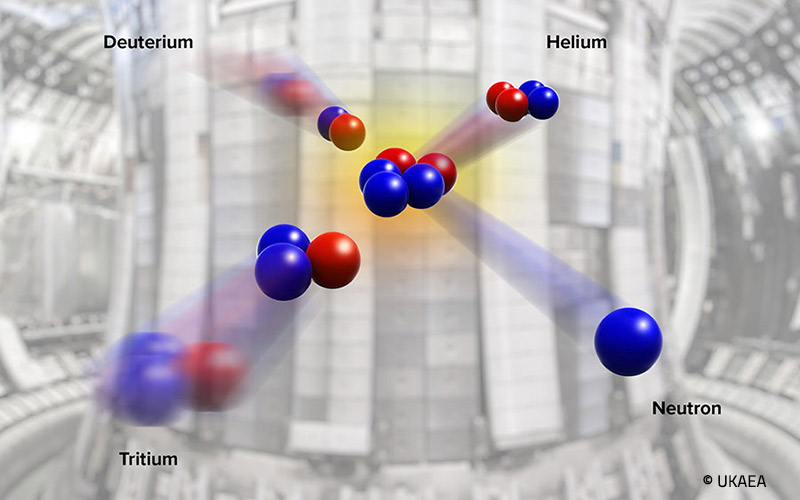
Explore the everyday science behind the quest to harness fusion energy – the energy that powers the stars – in a safe way here on Earth.